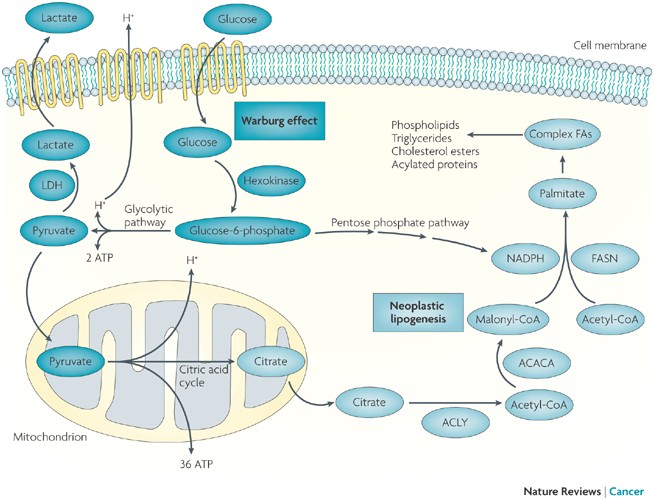What is FASN Protein?
Background of FASN Protein
Fatty Acid Synthase (FASN) protein is one of the versatile molecular complexes responsible for the synthesis of fatty acids, particularly palmitate. First discovered by Vagelos and his colleagues in the early 1960s, this protein has since been an important subject of research in the field of biochemistry and molecular biology.
The FASN gene, located on chromosome 17q25.3 in humans, covers an area of approximately 57 kb with 43 exons and encodes for a multifunctional enzyme protein that weighs around 273 kDa. The protein structure of FASN is highly complex and consistent with a homodimeric organization. Each monomer of FASN consists of seven different active sites that are responsible for completing various steps in the fatty acid synthesis pathway. These active sites are strategically located to ensure optimal functionality and efficiency during the fatty acid synthesis process.
Function of FASN Protein
FASN is fundamental in de novo lipogenesis, a metabolic pathway responsible for the conversion of excess carbohydrates into fatty acids for longer-term storage in adipose tissues. FASN facilitates the creation of long-chain saturated fatty acids from acetyl-CoA and malonyl-CoA subunits primarily in the liver and adipose tissue. The product of this synthesis, palmitate, serves a multitude of roles within the body, including energy storage, hormone production, and cell membrane formation.
FASN Protein-Related Signal Pathway
Disturbances in FASN signaling pathways have been noted in various disease contexts, most notably cancer. Many tumors require an increased supply of fatty acids for rapid growth and survival, thereby increasing the expression of FASN. Simultaneously, suppression of FASN expression or activity has been associated with reduced cancer cell proliferation and viability. Furthermore, the AMPK and mTOR pathways, which regulate cellular metabolism and growth, respectively, are closely associated with FASN.
FASN Protein-Related Diseases
The deregulation of FASN has been connected to various diseases. In metabolic disorders such as diabetes and obesity, dysregulated FASN leads to abnormal fat accumulation with detrimental effects on insulin sensitivity. Studies have also linked elevated levels of FASN to different types of cancers, including breast, prostate, ovarian, and colorectal cancer. Interestingly, it's also linked to neurological diseases, such as Alzheimer's disease, where it is proposed to be involved in amyloid-β oligomerization, a key event in the disease's pathogenesis.

Fig 1. Fatty acid synthase and the lipogenic phenotype in cancer pathogenesis (Menendez, J. A., & Lupu, R. 2007)
Applications of FASN Protein in Biomedical Field
Because of its involvement in numerous disease pathways, FASN has emerged as a potential target for therapeutic intervention. In cancer research, FASN inhibitors are being actively investigated for their potential to block fatty acid synthesis in tumor cells, potentially hindering their growth. In relation to metabolic disorders, the modulation of FASN activity could help regulate lipid metabolism and improve insulin resistance, therefore holding promise as a therapeutic avenue for conditions such as obesity and diabetes.
Furthermore, given the relationship between FASN and neurological diseases, it may hold potential as a target for drug development efforts in neurodegenerative diseases. Despite challenges, including the ubiquitous presence of FASN in the body and the potential for adverse effects, continued investigation into specific and well-tolerated modulators of FASN holds promise in the development of broadly applicable therapies.
In conclusion, FASN serves as a critical enzyme in fatty acid synthesis playing a variety of roles in the cellular metabolism and is implicated in the etiology of various diseases, including cancers, metabolic disorders, and neurodegenerative diseases. In the future, a more in-depth understanding of FASN's structure, function, signaling pathways, and involvement in disease will offer new possibilities for therapeutic developments.
Our Featured Products
| Cat.No. | Product Name | Species | Source (Host) | Tag |
|---|---|---|---|---|
| FASN-30158H | Recombinant Human FASN protein, GST-tagged | Human | E.coli | GST |
| FASN-2661H | Recombinant Human FASN protein, His-tagged | Human | E.coli | His |
| FASN-2924H | Recombinant Human FASN Protein, His (Fc)-Avi-tagged | Human | HEK293 | His (Fc)-Avi |
| FASN-0481H | Recombinant Human FASN Protein (Q1109-G1524), Tag Free | Human | Insect Cell | No tag |
| FASN-4433HFL | Recombinant Full Length Human FASN protein, Flag-tagged | Human | Mamanlian cells | Flag |
| FASN-5686M | Recombinant Mouse FASN Protein | Mouse | Mammalian Cell | His |
| FASN-3121M | Recombinant Mouse FASN Protein, His (Fc)-Avi-tagged | Mouse | HEK293 | His (Fc)-Avi |
Reference
- Menendez, J. A., & Lupu, R. (2007). Fatty acid synthase and the lipogenic phenotype in cancer pathogenesis. Nature Reviews Cancer, 7(10), 763-777. https://doi.org/10.1038/nrc2222

